If you’re planning to set up an eCommerce business, you would have heard of Shopify.
What is Shopify and how does it work?
In short, Shopify is a platform that lets you create and manage your own online store. It’s an all-inclusive software solution that gives you everything you need to set up a business, promote, sell, and ship your products to customers.
But there’s more to Shopify than this. Shopify has a few different plans, and many extra features and additions available.
In this guide, we’ll explain everything you need to know about Shopify, how it works, how to get started with it, and how to know if it’s a good fit for your business.
Watch this video for a complete summary on Shopify and how it started
Table Of Contents
- What is Shopify?
- How Does Shopify Work?
- Shopify’s Core Product Features
- Advantages Of using Shopify
- Shopify Cons
- Shopify Pricing Plans
- How to Build an Online Store With Shopify
- Tips for Creating a Profitable Shopify Store
- How to Get Started With Shopify
- Shopify Custom Mode
- Shopify vs Amazon
- How Did Shopify Start?
- How Shopify Dominated eCommerce
- How Does Shopify Make Money?
- How Much is Shopify Worth?
- What is Shopify FAQs
What is Shopify?
Shopify is a subscription-based software that makes it easy for anyone to set up an online store and start selling.
It’s mainly an eCommerce store platform that lets businesses reach their customers wherever they are. However, fully answering the “what is Shopify?” question involves a lot more than just this.
Shopify also offers POS software for stores with physical locations.
And Shopify’s eCommerce store platform is not just a singular product. It’s a platform that offers many different tools to launch your business and start selling. This includes the Shopify App Store, which has all kinds of extra features and additions to use with Shopify.
Quite simply, Shopify makes it easy for you to start your own online store, accept payments online and in-person, market your store through a few channels, and manage everything from one place.
Shopify allows anyone to create a full-scale online store using the site’s own hosting and payment platforms, leaving business owners free to focus on work without worrying about the technicalities of setting up a website.
Millions of the world’s biggest online retailers use the Shopify platform to sell their products.
It’s the world’s fastest-growing eCommerce platform.
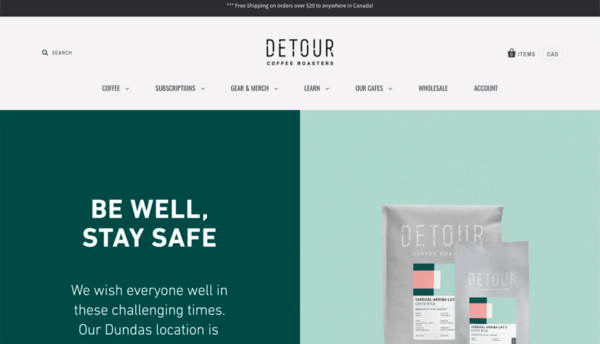
Above: Example of a Shopify store (image: Shopify)
How Does Shopify Work?
Shopify works by taking all of your online business functions and putting them into a centralized command center.
Shopify merchants can use the platform to build and customize their eCommerce website, accept payments, and sell both online and in brick-and-mortar stores.
You can also use Shopify to sell on social media, online marketplaces, and pop-up shops.
Retailers can use Shopify to keep up to date with their inventory and stock, which syncs with both online and offline sales. This way, you can easily manage all of your retail operations from one place.
The platform also has features to manage shipping.
Shopify is a fully hosted cloud-based platform. This means Shopify takes care of things like server upgrades, software upgrades, and maintenance. You can access your online store from anywhere with an internet connection, and Shopify will cover all the hard work.
Any business owner has a lot on their plate. They have to showcase their products, engage with customers, make sales, accept payments, and manage these day-to-day operations.
This can require a lot of different tools and data systems, which can be time-consuming and expensive to manage. However, Shopify store owners can pack all of these processes into one platform.
With inbuilt marketing tools and 24/7 technical support, Shopify is easy and convenient to use, helping you set up your business within minutes. Not just online, but in physical locations too.
Basically, Shopify gives you all the tools you need to set up and operate your online business.

Above: This is what the backend of Shopify looks like (image: G2)
Shopify’s Core Product Features
Every single Shopify plan is based around the same core product set.
This core product covers all of the basic functions that you need to set up an online store, process payments, and manage your business.
Here is a breakdown of these core features. When you start a Shopify store of any kind, this is what you get.
A Hosted Online Store
First, you get access to a hosted Shopify store. This is where you upload and sell your products.
Shopify offers free hosting with every store. You don’t have to worry about keeping your store online and safe. This makes selling online a lot easier.
Your Shopify store offers loads of different functions, like the ability to create new web pages and publish blog posts.
You can customize the look and feel of your Shopify store with different templates and Shopify theme options. These are available in the Shopify Theme Store.
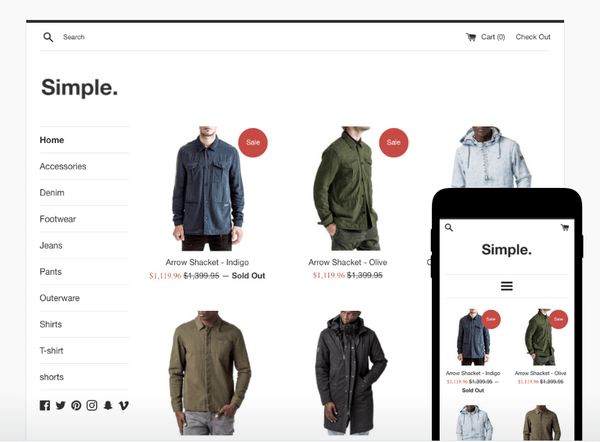
Image: G2
POS Lite
Everyone with a Shopify account can access Shopify POS, which is a point of sale app. This app can be used to sell products in person. If you have a brick-and-mortar store, or if you do popups or markets, then this is convenient.
Shopify POS Lite comes with every Shopify subscription. You just need to order the right hardware to accept payments.
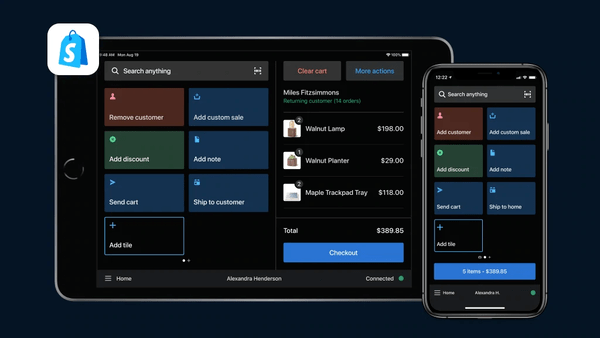
Image: Shopify
Payment Processing
Shopify users can access over 100 different payment gateways, or they can use Shopify Payments if they don’t want a third-party payment processor.
Whatever payment processing option you choose, you can accept all major payment methods on your online store in over 133 currencies.
Shopify Checkout
Shopify Checkout is used wherever you sell online – whether it’s your own online store or on social media. This tool offers a fast and efficient checkout process.

Image: Shopify
Shipping
Now that you can make sales and accept payments, you’ll need to fulfill your orders.
Shopify Shipping is available to do this. Canadian, American, and Australian Shopify store owners can offer live order tracking, fast shipping, and discounted courier rates.
Back Office Tools
Shopify offers various back-office tools to help you keep your business organized and running smoothly. These tools make it easy to manage everything from one platform.
Shopify’s back-office tools include:
- Mobile app: to easily manage your store and your business from your phone
- Analytics and reports: to gain real-time insights into how your store is performing find ways to optimize your business
- Shopify App Store: the Shopify App Store offers many free and premium apps that you can add to your Shopify Store for more features and functionalities, such as Winback’s cart abandonment tool
- Support: 24/7 customer support
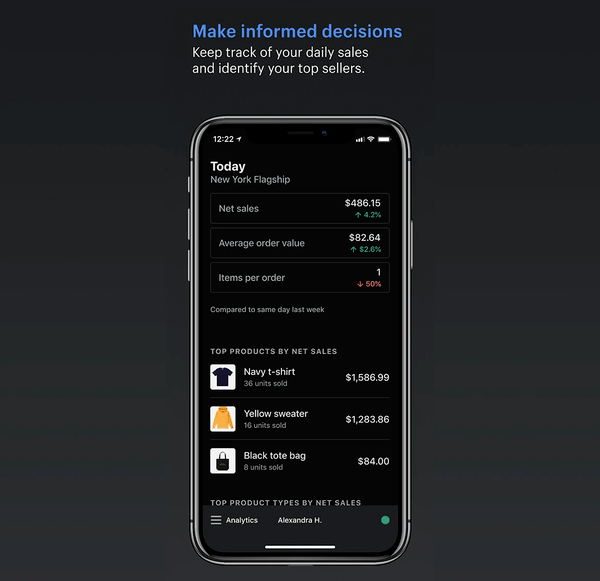
Image: Shopify
Marketing Tools
Shopify even offers basic marketing tools to help you reach more customers.
This includes a built-in blog and SEO tools, and a dashboard to set up Google and Facebook shopping campaigns.
These tools are useful for a start, but they’re not always enough to reach the customers you want.
Wishpond’s Shopify marketing platform gives you a complete set of marketing tools to attract and retain more customers. With Wishpond, you get all the marketing tools you need in one easy platform, fully integrated with your Shopify store.
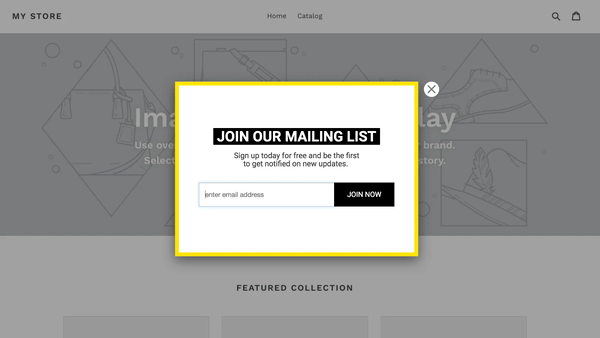
Advantages Of Using Shopify
With millions of Shopify users around the globe, there’s a good reason that so many merchants are using Shopify to power their online stores.
Let’s break down some of the main advantages of using Shopify for your online store.
Ease of Use
Shopify was designed to be the most user-friendly tool for setting up an online store.
With a few simple clicks, anyone can build their own eCommerce website and start selling. The platform has an intuitive drag-and-drop editor to easily customize your store. No coding is required.
Hosting is taken care of, and you get all the tools you need to accept payments and checkout sales all in one place.
With Shopify, anyone can start an eCommerce business – regardless of their technical capabilities.
Mobile-Friendly
All Shopify stores are fully mobile responsive. This is where most of your web traffic will come from, and you won’t have to worry about the challenge of optimizing your online store for your customers’ mobile screens.
Shopify is also mobile-friendly for online store owners.
You can download the Shopify app on your phone, and log into your account from your mobile device. This lets you easily manage your store from absolutely anywhere.
With Shopify, you can run an entire business from the palm of your hand.
Social Media Integration
Social commerce is huge. Shopify also lets users sell directly on social media. This is a great opportunity to make more sales.
Your Shopify account can integrate with Facebook, Instagram, and TikTok to let you sell directly on those platforms.
This means social media users can discover your brand products through a social media channel and make a purchase all in the session.
Read this guide to learn more about social commerce.
Get Your Own Domain Name
Shopify users get their own custom domain name. You can either buy a Shopify domain name when you sign up, or you can connect the domain name of your existing website with your Shopify account.
Loads Of Shopify Themes
You can completely customize your Shopify store to match the look and feel of your brand. Shopify has lots of free themes available, as well as premium themes and templates.
These make it easy to make your online store look exactly how you envisioned it. You can add your logo, change colors, fonts, and more without requiring any coding knowledge.
Whatever type of products you sell, there will be a Shopify theme that perfectly matches your business.

Above: Example of a free Shopify theme (image: Shopify)
Shopify is Great for Dropshipping
Dropshipping is one of the easiest ways to start an online business. It’s more popular than ever, and Shopify’s platform offers everything you need to set up an effective dropshipping store.
Integrate Shopify with Oberlo to find dropshipping products and suppliers. This lets you sell products without having to hold any inventory and worry about fulfilling orders.
If you want to start making a passive income online, you can start selling on Shopify with minimal effort and resources.
Accept Payments Anywhere
Shopify isn’t just for selling on your online store. You can also make use of the Shopify POS software to sell in your brick-and-mortar location.
Shopify can help you sell on online marketplaces, at popup events, or anywhere else that you need to accept payments. It’s a versatile platform for any retailer.
Shopify App Store
If you find the basic Shopify features to be limiting your business, you can access many more advanced Shopify tools in the App Store.
Just choose your app and connect it to your online store with one click. You can access limitless possibilities for expanding your Shopify functions.
So even if you have a basic Shopify plan, the many available apps let you customize your store with the exact features you need.

Shopify SEO Tools
Shopify stores come with built-in SEO features to help your business get discovered.
This automatically takes care of many time-consuming SEO tasks, such as adding canonical tags to pages. Your website’s sitemap.xml and robots.txt files are automatically generated, and themes automatically generate title tags that include your store name.
The many features built into Shopify make it easy to optimize your content for SEO. This includes tools for your meta title tags and descriptions, URLs, products, webpages, and more.
No-Fee Shopify Payments
Transaction fees can be a killer for any online business. While Shopify takes 0.5% – 2.0% transaction fees, the platform also offers users the option to get rid of these fees if they use Shopify Payments.
Shopify Cons
Even though Shopify is so widely used, there are still a few drawbacks to using this software to start an online store:
- Limited Functionality: While Shopify comes pre-loaded with everything you need to create and manage your online store, Shopify doesn’t have features that meet very specific business requirements. To get your store to meet your specific business needs, you will have to buy add-ons.
- Expensive Add-Ons: Add-ons give your Shopify store greater abilities and functionalities, but they can be costly. If you have to buy a lot of different add-ons, it can get expensive.
- Transaction Fees: Every Shopify plan has its own transaction fees. These only apply if you don’t use Shopify Payments. Shopify fees range from 0.5% to 2.0% depending on your plan. Most other shopping carts have dropped their transaction fees.
- Possible Customer Support Issues: With so many users, Shopify’s customer support can be a bit strained at times. Although this is a mixed bag. Some Shopify users love the 24/7 support, while others complain about it.
Shopify Pricing Plans
Shopify offers a range of different plans to match the needs of any kind of business. Whatever stage your business is in, and whatever specific requirements your business has, there is a Shopify plan that will match your needs.
Here is a breakdown of the different Shopify pricing plans available.

Shopify Lite
- $9/mo
Shopify Lite lets you add a “buy” button to your existing website. It’s the cheapest and most simple Shopify plan that’s just focused on accepting online payments.
You can use this subscription to start accepting payments on whatever website you already have, as well as on social media.
This plan comes with a 2% transaction fee if you don’t use Shopify Payments.
Basic Shopify
- $29/mo
This is the bare essentials Shopify plan for businesses that want to build a storefront and start selling online.
The plan includes all of Shopify’s core functions listed above. You can include two staff accounts, sell an unlimited number of products, and build a functional eCommerce store with a blog.
Some other features include a free SSL certificate, abandoned cart recovery feature, discount codes, and manual order creation.
This plan comes with a 2% transaction fee if you don’t use Shopify Payments.
Shopify Standard Plan
- $79/mo
Shopify’s standard plan includes everything you need to start and grow your business. You get everything included in the basic plan, as well as 5 staff accounts and up to 5 inventory locations.
This is the best plan for growing businesses that are already established.
The plan comes with a 1% transaction fee if you don’t use Shopify Payments.
Advanced Shopify
- $299/mo
The Advanced Shopify plan is designed for larger businesses with greater sales volumes. The plan includes shipping and more advanced reporting, including custom reports for at-risk and loyal customers.
You can add up to 15 staff accounts and up to 8 inventory locations. The transaction fees on this plan are a low 0.5%.
Shopify Plus
- $2000/mo
Shopify plus is reserved for large-scale enterprises. This expensive plan includes every feature any online store needs. The plan is tailor-made to match your business model.
The benefits include higher conversions, faster checkouts localized shopping experiences, and all kinds of other advanced customizations just for your business.
You can create an incredibly powerful online store with this plan, but it’s strictly reserved for those who have the budget for it.
How to Build an Online Store With Shopify
With Shopify, you can get your online store up and running in about 15 minutes. Here are the basic steps to follow:
- Sign Up for Shopify: Sign up for Shopify by going to their website and clicking “Get Started”. Choose your plan and fill in your details. If you’re not sure, you can also choose the 14-day free trial.
- Start Building Your Store: Once you’re signed up, Shopify takes you to the admin screen of your new website. Now you can start to customize your site and add products.
- Customize the Look Of Your Store: Choose your store’s theme, colors, logos, and all other elements that affect the look and feel of your store.
- Set Up Your Domain: Once you’ve set up how your store looks, you can set up your domain. Go to the dashboard and click “Add a Domain”. Now you can either register a new domain or transfer your existing one.
- Activate the Payment Processor: Click on the “Payments” tab in the dashboard and choose your payment processor from the options available. You can also choose Shopify’s payment processor to make things easier.
- Start Selling: All of the basic elements of your store are now set up so you can start making sales. Of course, you can always customize this further by installing extra apps. Once all these steps are taken care of, you must also ensure your customers’ cyber safety. Make use of identity theft protection services and other safety tools so no harm comes to those who shop with you.
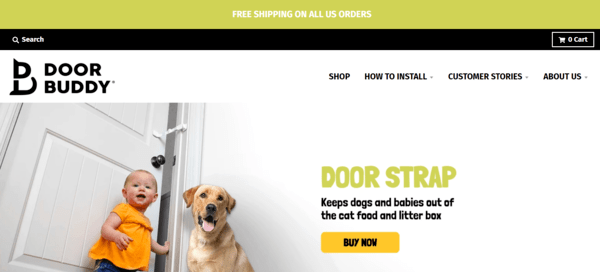
Above: Example of a Shopify store
Tips for Creating a Profitable Shopify Store
Here are a few steps to help you make the most of the software’s strengths.
Understand Shopify Payments
A big disadvantage of using Shopify can be the transaction fees. However, these can be waived if you use Shopify Payments.
Shopify payments also offer reduced processing fees to clients on higher-level Shopify plans.
So even if Shopify Payments isn’t your first choice for a payments processor, it can help you save a significant amount of money.
Look into other payment processor options too. Some processors may end up being a better deal, even with Shopify’s transaction fees. Knowing how to choose the right payments processor can make a big difference to the overall success of your store.
Use Shopify Themes and Plugins
A big drawcard for Shopify is its excellent web design.
The platform has a great drag-and-drop editor function, with lots of modern themes available. It’s easy to make a site that looks amazing, even if you don’t have any web design experience.
There are premium themes available, but Shopify’s standard themes offer everything you need to start a business that looks great and functions well. So if you’re just starting out, opt for the free themes.
Use Shopify POS for Multichannel Sales Opportunities
If you’re a merchant that sells in-person and online, then you can use Shopify POS.
This lets you complete in-person retail transactions and process credit card payments. You just need to make sure you get the right POS hardware to support this.
Take Advantage Of Shopify Add-Ons
Shopify’s marketplace has over 3500 product add-ons.
This includes some important integrations that your store will need, like shipping software, SMS marketing software, payment gateways, and Shopify cart abandonment tools.
Understand the exact needs of your business, and look for solutions to match this on Shopify’s online marketplace. There are many great free apps available.
Start a Shopify Blog
Shopify comes with a built-in blog feature. You can write and publish blog posts straight from your admin panel.
This is incredibly useful for SEO and content marketing to help your online store get discovered.
Although, if blogging is your main focus, then you may be better off with a platform like WooCommerce that lets you add a shopping cart into a pre-existing blog post.
With Shopify, you can write blog posts about your products, their benefits, and why they will add value to your customers. By publishing a steady stream of blog content, you’ll be able to reach a lot of people and persuade them to become customers more easily.

Make Use Of Shopify’s Customer Service
Shopify offers free 24/7 technical support.
The platform has phone support, live chat support, email support, video tutorials, a community forum, and more. If you need to figure out how to do something with Shopify, there will be plenty of answers out there.
So if you ever get stuck, don’t panic. Just reach out to customer support at any time, and they will help you out for free.
Sell On Social Media
Another big advantage of using Shopify is its ability to integrate with your social media accounts. This lets you reach a wider audience with your products, advertise more effectively on social media channels, and sell through new avenues.
You can do this with Facebook, Instagram, TikTok, and Pinterest.
The only way to sell products through TikTok is with a Shopify account. So if you have a presence on this important social media platform, then be sure to tap into it.

Follow our guide to learn more about using Shopify to sell on TikTok.
Get the Right Shopify Marketing Software
Having great products and building the perfect Shopify store is the first step. Once this is done, you will need to attract customers. To do this, you’ll need the right suite of digital marketing tools.
Important tools include email marketing software, abandoned cart SMS marketing software, pop-up software for sales and promotions, a leads database, social giveaway tools, and more.
While it can be expensive and time-consuming to get each of these tools individually, Wishpond offers all of these tools, and more, in one easy package. This is all integrated with Shopify, which makes running powerful campaigns that drive more sales effortless.
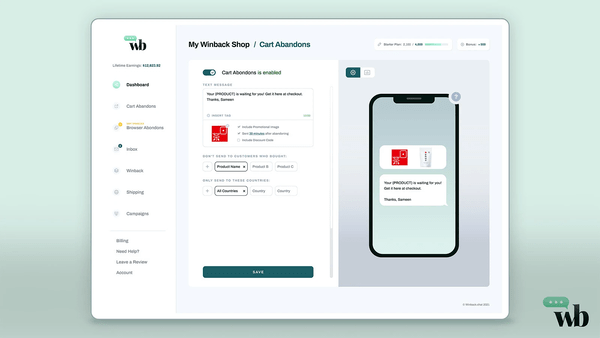
Other Ways to Make the Most Of Shopify
Shopify gives you a lot of options for building and growing your business. Here are a few tips and strategies that you can use for more eCommerce success:
- Dropshipping Apps: You can integrate your Shopify store with dropshipping apps, like Oberlo, to easily start and manage your dropshipping venture
- Shopify Shipping: Shopify offers a shipping module that integrates with major shopping carriers. You can use it to calculate shipping rates in real-time. You can display these rates in your customers’ carts, and use the module to purchase and print shipping labels.
- Amazon and eBay Integrations: You can connect Shopify to Amazon and eBay to process orders from all of your different sales channels from one Shopify account.
- Get the Shopify App: you can also manage your Shopify store from your mobile with an iOS or Android app.
How to Get Started With Shopify
The best way to get started with Shopify is to sign up for the 14-day free trial.
All you need to do is submit your basic contact information (no credit card information needed) to start your free trial.
During these 14 days, you can test out every aspect of Shopify’s software.
Create an eCommerce store, add products, customize the design of your storefront, run Shopify marketing campaigns, and more. This will help you realize whether Shopify is suitable for your business and whether you might need to use an advanced Shopify plan.
During this trial, you can also identify any advanced features you might need, like abandoned cart notifications or filtered search, and see which are most important and whether they match your budget.
Get in touch with Shopify’s support team if you run into any issues, and search the app store for any additional features you might need.
Once you have trialed the software, you will have a good understanding of which Shopify plan is best for you.
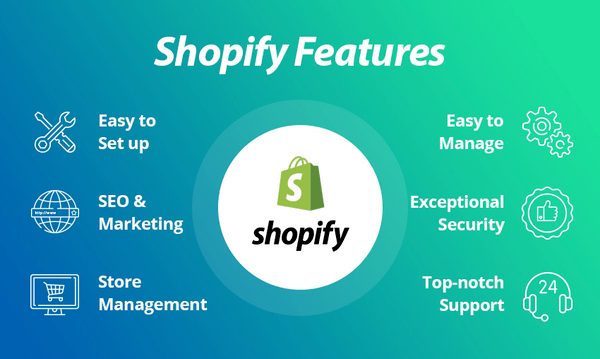
Shopify Custom Code
Shopify’s mission is to make entrepreneurship accessible to everyone.
This is why the platform is so easy to use and can be used by anyone no matter what their level of technical knowledge is.
However, this doesn’t mean you have to be limited by the Shopify templates and features offered out of the box.
It’s possible to customize every aspect of your Shopify business and shopping experience. This means you can build a one-of-a-kind Shopify store.
If you want more control or customization over your Shopify store, here are a few options you can choose from:
- You can customize your theme or build a theme from scratch
- Use APIs to power custom experiences
- Use Shopify’s API and developer tools to build custom apps for your store
This means you don’t have to trade ease of use with customization when you choose Shopify. As long as you have the technical know-how, it’s still possible to completely fine-tune your business.
Shopify vs Amazon
We’ve answered the question “what is Shopify?”, but what makes this platform so valuable compared to the competition?
Let’s compare Shopify to Amazon to make things a bit more clear.
With over 150 million visitors on their website every month, Amazon is a global eCommerce giant. But, Shopify is disrupting this very market and giving power back to small and medium-sized businesses by giving them full control of their sales.
In simple words, Amazon is an online marketplace. This means that when you sell through Amazon, you’re in competition with tons of other businesses, all hosted by Amazon.
From the point of view of a customer, there’s no way for them to differentiate between stores or sellers on Amazon.
You might make tons of sales with Amazon simply because of how many people use the platform.
At the same time, the products that you’re selling will always appear alongside other suppliers’, making it hard for the customer to differentiate between your store and someone else’s. Amazon will also ship all your products in their own branded packaging.
At the end of the day, it all comes down to the prices and customer reviews to see whether or not people will choose to buy from you.
While third-party sellers now make up for about 60% of the sales on Amazon, the vendors have little to no power in terms of brand identity or pricing.
Today, if a business lists a product on Amazon for $50 dollars, the platform gets around $8.50 dollars in commission and another $6.50 if the seller wants to advertise the product on the site.
And if the product is packed and shipped through Amazon, the platform gets a cut of around 40%, leaving the seller with practically nothing.
This is where Shopify comes in. As convenient as Amazon is for their customers, what about the sellers, right?
The difference between Shopify and Amazon is that Shopify is a specialized eCommerce platform that gives you all the tools you need to build your own, independent store.
You’re essentially renting space to set up your business with its own identity. This makes Shopify the ideal platform for small and medium-sized businesses that are looking to connect with the right customer base.
At the end of the day, Shopify puts their sellers first and only takes a small cut out of each sale, helping businesses grow to their full potential.
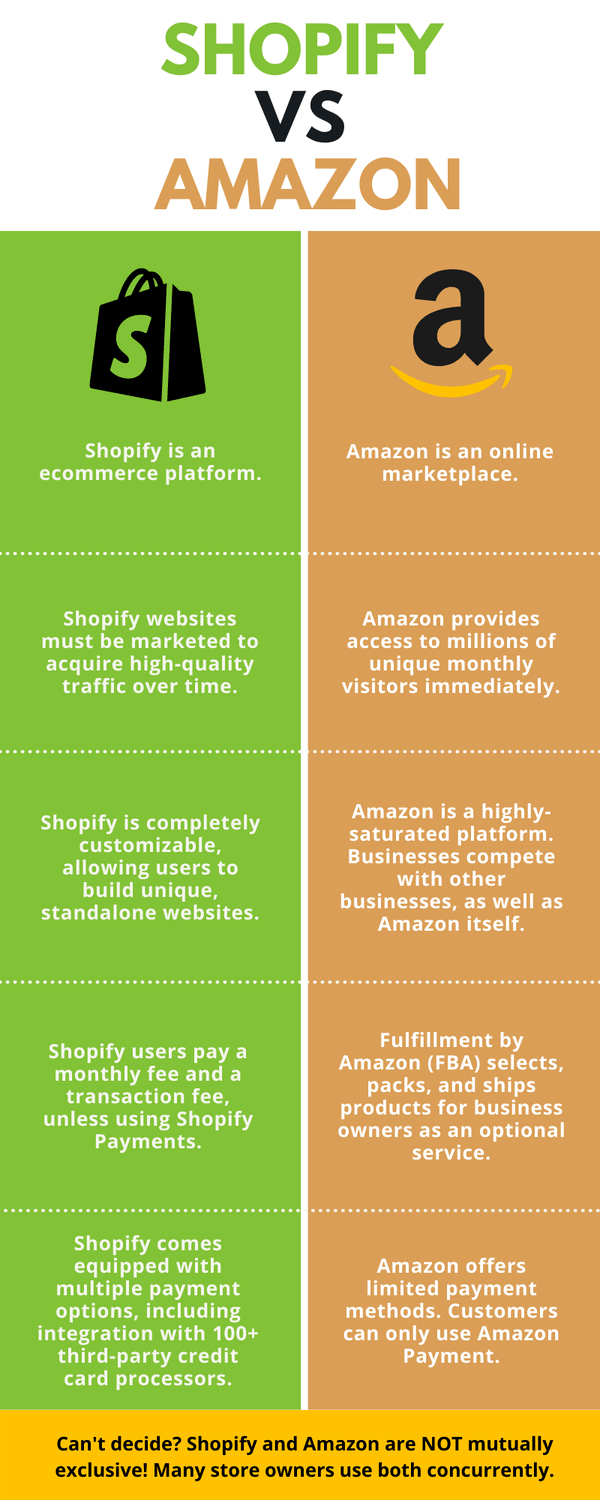
How Did Shopify Start?
The story of Shopify goes back to 2004 when its founders Tobias Lutke, Daniel Weinand, and Scott Lake decided to set up an online store called Snowdevil, to sell snowboarding equipment.
The three friends soon realized that no existing eCommerce platform was good enough for them to keep their online business going. Being a software engineer, Lutke ended up designing brand new software to run their store. Now the three partners quickly realized that they had a bigger opportunity at hand.
Together, they started developing software that would help small business owners sell products online without any hassle.
By 2005, the three friends managed to raise $200,00 dollars for their idea and in 2006, they officially launched Shopify – a set of online tools that merchants could use to build and customize their own websites.
With features like store templates, tracked order feeds, inventory organization, image uploading, and payment processing, Shopify had everything you could ask for in an eCommerce platform.
By 2007, The company had raised around $250,000 dollars, putting the company’s valuation at 3 million dollars.

Above: Shopify founder Tobias Lutke (image)
At the same time, Shopify decided to change the way it functioned and switched to a subscription-based model instead of changing individual transaction fees. This way, they helped their sellers generate greater revenue, and their trust in the platform increased tenfold.
With the growth of eCommerce, hundreds of people joined the platform to start their own entrepreneurial journeys. By 2008, Shopify had emerged as an easy-to-use platform that let anyone set up their own online store.
Their software was cheaper and easier to use than all of the other options on the market, like Microsoft Commerce and Yahoo Stores. With this in mind, Shopify continued to demonstrate how they could cater to sellers of all needs and sizes.
In 2009, Lütke and Weinand decided to target a larger market. Shopify transitioned from a tool to a platform by building an API along with an app store. This helped merchants build their own fully-customizable online stores and apps for their Shopify stores.
This transition came in handy in 2010 when smartphones were on the rise. This is when Spotify decided to launch their free mobile app which would help sellers monitor their sales online, look up customer details, and complete orders right from their phones.
This opened up the platform to an even larger customer base and by 2011, Shopify was supporting 11,300+ stores, generating over $125 million in revenue across all store owners.
From 2011 to 2012, Shopify saw 61% growth in new stores and over 2.2x revenue growth, up to $275 million in sales.
Over the years, the platform introduced features like refund management and improved search functionality along with the option for their merchants to sell offline with in-store and online inventory synching, adding another layer to the platform’s abilities.

Shopify Going Public
After 10 years of organic growth, Shopify went public in 2015, raising more than $131 million dollars.
At the same time, Amazon decided to sell its website-building division to Shopify for $1 million dollars, practically accepting their defeat. This helped the company’s shares jump by 20%.
How Shopify Dominated eCommerce
Since then, Shopify has been dominating the eCommerce industry and they continue to evolve with the rise in technology.
By 2019, Shopify passed eBay to become the second-largest e-commerce platform after Amazon, in the United States.
During the pandemic, Shopify continued its winning streak, giving a platform to all kinds of retail stores as they transitioned to the world of online shopping. In 2020, the sales on Shopify skyrocketed, helping the platform become Canada’s most valuable company with its revenue growing by 96%.
Shopify capitalized on this increased demand. They launched a shopping app and teamed up with Walmart to distribute its merchant’s products to its online store.
Despite the fact that the platform fell prey to a massive security breach in the same year, Shopify managed to bring the situation under control, keeping the sellers and customers satisfied on all ends.
How Does Shopify Make Money?
Shopify makes money through its wide range of subscription plans for different kinds of businesses, commissions through sales, payments, and advertising on its platform.
With the aim to empower small business owners, Shopify offers subscriptions that range from $29 dollars to $299 dollars per month, depending on the kind of features you need to use for your business.
Not just that, the platform also hosts tons of international businesses such as Sephora and Tesla with their Shopify Plus Plan that starts at $2000 dollars.
Lastly, Shopify also offers a subscription plan called Lite, which allows website owners to add a Shopify store to their existing web properties. Lite costs $9 per month.
At the end of the day, the primary goal for Shopify is to streamline the online selling process for their merchants. Shopify offers its merchants a variety of different marketing channels, including promoting their businesses on social media or via email campaigns, charging $0.001 for every mail above the 2,500-email threshold – which isn’t bad at all.
Recently, the platform has also launched its own set of shipment services called ‘Shopify Fulfilment Network’ and ‘Shopify Shipping’ which has helped the company generate revenue depending on the number of orders their merchant’s ship through them.
How Much is Shopify Worth?
At the moment, Spotify is worth $140 billion, making it the 95th most valuable company in the world in terms of market capitalization.
Shopify has over 1.75 million merchants, 3.76 million live websites, and 457 million buyers. It’s well on its way to changing the online shopping industry.
With the pandemic winding down, Shopify’s growth is expected to slow down. But, with new and improved features on the platform, including Livestream shopping events, Shopify is expected to generate another $35 billion by 2023.
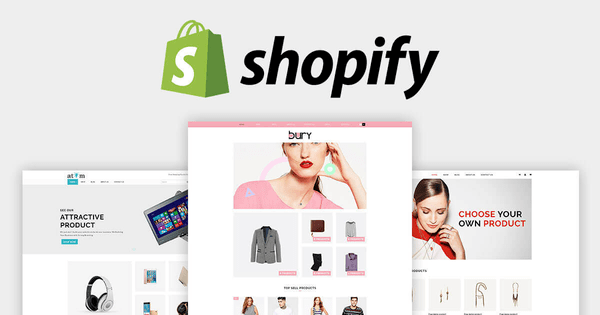
Summary
Shopify started as a simple online shop tool, and it’s grown into an entire ecosystem that’s helping the eCommerce industry grow in more ways than people could have ever imagined.
Shopify has enabled thousands of people to start their entrepreneurial journey with their successful business model. There’s no doubt that Shopify will be able to power through any market changes and emerge as the winner of online retail.
If you’re considering starting an online store, then Shopify is widely considered the best place to start.
What is Shopify FAQs
What can I sell on Shopify?
Shopify lets you sell both goods and services online. As long as it’s legal, you can sell absolutely anything with Shopify. You can use Shopify to sell physical products, classes, membership, services, digital classes, event tickets, and more. You can also use the platform to accept donations. Shopify allows you to sell an unlimited number of products.
Is Shopify good for small businesses?
Yes, Shopify is an excellent choice for small businesses. Shopify Lite and Shopify Basic are affordable plans for setting up an online store and accepting payments. You can also use more advanced Shopify plans as your business grows.
Shopify is great for small businesses because you get all the tools you need to set up an online store and start selling. It’s also very easy to use, so anyone can create and manage a store without any technical expertise.
Which Shopify plan is best?
This depends on the scale and requirements of your business. If you are a new small business and just want to start selling, then the Basic plan offers everything you need. If you are a growing business, then the standard Shopify plan is a good choice. Large-scale businesses can unlock useful features with the Advanced plan, while enterprise-level companies should opt for Shopify Plus.
Can I choose my own domain name with Shopify?
Yes, you can buy your own domain name through Shopify. Users can add a custom URL so that their online store displays as www.*.com. The primary domain name on Shopify will otherwise look like *.myshopify.com when you sign up. If you already own a custom domain name, you can use this too. You just need to transfer management of the domain from the other provider to Shopify.
What is Shopify Lite?
Shopify Lite is the most simplified eCommerce solution that Shopify offers. This $9 subscription plan lets you add a ‘buy’ button to your website or social media pages. You can’t build a complete eCommerce website with Shopify Lite, but you just get access to the essential eCommerce features to start accepting payments and selling products online.
What is Shopify Plus?
Shopify Plus is a more advanced version of the standard Shopify Plan. Along with all of the core features, you also get:
- A dedicated account manager to offer personalized support for your store
- More theme options and customizations
- Access to Liquid, which lets you make changes to your store at the code level for more control
- Unlimited staff accounts
- More API integrations
- A greater level of control over the checkout process
- Access to exclusive Shopify apps
Is Shopify better than Amazon?
Shopify lets you set up and run your own independent online store, and Amazon is an online marketplace that you can join. Amazon has loads of customers, but if you sell on the platform you lose your independence. Shopify gives you complete independence, but you will have to focus even harder on marketing and attracting customers. Shopify store owners also have to manage their own shipping and fulfillment, while Amazon takes care of this.




